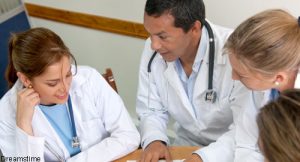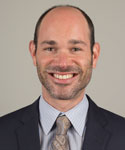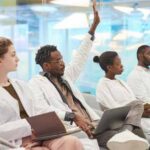 ORLANDO—“See one, do one, teach one” is the adage many physicians recall from their medical school and residency days. Although this pithy summary of the learning process seems straightforward, advances in our understanding of how to increase the effectiveness of medical education have transformed the way we instruct trainees. At the 2022 ACR Education Exchange, April 28–May 1, this topic was highlighted in a session focusing on evidence-based tools designed to improve the learning experience for rheumatology fellows.
ORLANDO—“See one, do one, teach one” is the adage many physicians recall from their medical school and residency days. Although this pithy summary of the learning process seems straightforward, advances in our understanding of how to increase the effectiveness of medical education have transformed the way we instruct trainees. At the 2022 ACR Education Exchange, April 28–May 1, this topic was highlighted in a session focusing on evidence-based tools designed to improve the learning experience for rheumatology fellows.
Jonathan Hausmann, MD, assistant professor of medicine, Beth Israel Deaconess Medical Center, Boston, began his lecture describing two emotions: excitement from attending his first ACR national meeting in 2011 and dismay in failing to recall most take-home points from the nearly 40 hours of lectures he attended. The experience left him wanting to know more about cognitive learning theory. And just as evidence-based medicine has evolved over the past 20 years, so too has evidence-based learning.
The concept of active learning describes how learners are taught knowledge and skills while thinking about the things they are doing to absorb that information. In a meta-analysis of 225 studies evaluating the performance of undergraduate students in science, technology, engineering and mathematic courses using traditional lecturing vs. active learning, Freeman et al. found active learning improved test scores and decreased failure rates compared with traditional lectures.1 Similarly, a Cochrane Review of continuing medical education meetings and workshops showed that mixed interactive and didactic education meetings were more effective than either didactic meetings or interactive meetings alone for improving professional practice and healthcare outcomes.2
The Study
Despite this data, lectures are the main mode currently used to teach basic science and clinical research skills to rheumatology fellows. This fact prompted Dr. Hausmann and colleagues to explore how active learning could be better incorporated into rheumatology fellowship didactics. The initiative focused on the introductory lectures new rheumatology fellows typically receive when they begin their fellowships.
In the first year of the project, Dr. Hausmann and colleagues observed trainees while they received traditional lectures, and each lecture was graded on its use of active learning techniques. Components of the score included such items as retrieval practice (i.e., using periodic questions during the lecture to revisit key concepts), elaboration (i.e., asking learners to explain their reasoning with follow-up questions or using hypothetical situations as the basis for discussion) and reflection (i.e., asking learners to identify or share with a neighbor key take-home points). At baseline, the average active learning score for these lectures was 8 on a scale of 0–24, with 24 being the highest degree of active learning.



